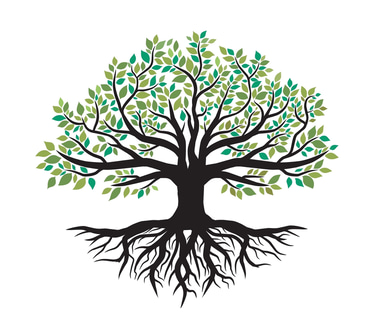How Clinical Massage Supports Stress Recovery
How Relaxation Becomes Healing
11/10/20254 min read


By definition, stress is, “the body’s non-specific response to any demand made upon it. Stress is not a disease but can contribute to ill health.” ~ Hans Selye, Endocrinologist and leading authority on stress and its effects.
More specifically, stress involves physiological and psychological reactions that trigger the sympathetic nervous system, our internal survival process, designed to help us either adapt or cope with a situation. This response includes the release of hormones, such as adrenaline and cortisol that prepare the body to react fast, commonly known as the “fight or flight” reaction.
While stress is often viewed negatively, it serves an essential function in our survival by enabling us to respond quickly to threats and challenges. Its overall impact, however, depends greatly on its duration, intensity, and how it is perceived and managed.
It is important to mention that stress includes activities required to maintain balance or “homeostasis” in the body such as shivering when we are cold to conserve heat or, conversely, sweating when we are too hot to cool down. There is also healthy beneficial stress that makes life interesting and exciting, known as “The spice of life”. Even when the body is completely relaxed, stress is experienced through the digestion of food, the beating of the heart or the contraction of muscles that hold a person upright.
Types of Stress
Eustress is a beneficial stress response that:
Is temporary and manageable
Motivates and focuses energy productively
Feels exciting rather than overwhelming
Enhances performance and resilience
Examples: starting a new job, trying a challenging workout, or moving away to university
Acute stress is a reaction to a specific event or situation that:
Lasts for a short period of time
Is positive or negative in nature
Generates feelings of anxiety, anger, confusion, sadness or detachment
Examples: thrill of a rollercoaster ride, meeting a tight deadline, or getting stuck in traffic
Episodic stress is a recurring pattern of short-term acute stressors that:
Generate a feeling of constant urgency and overwhelm
Are frequent in nature, but short-term
Lead to overextending oneself, rushing or multitasking
Affect the body’s ability to relax or sleep
Examples: Juggling multiple personal and professional responsibilities, managing consecutive deadlines, or facing a stream of emergencies (i.e., sudden life changes, first responder roles)
Adaptive physiological changes of stress include:
Elevated heart rate and blood pressure (adrenaline surges)
Rapid breathing (increase oxygen intake)
Muscle tension (shoulders, neck, and jaw)
Dilated pupils (for sharper focus)
Slowed digestion (reduced appetite or nausea)
Increased sweating (to cool the body)
Release of glucose and fats (for quick energy)
These adaptive changes subside once a situation passes, but can contribute to chronic issues if triggered too frequently without adequate time to recover.
Chronic stress is a persistent state of stress that:
Is long term and ongoing
Has no clear resolution or end
Disrupts the body’s ability to function normally
Generate feelings of hopelessness, being trapped, or emotionally drained
Examples: financial difficulties, relationship conflicts, or health concerns
When the stress response remains activated for weeks, months, or even years, it can lead to a state of distress in which the body and mind struggle to cope effectively with ongoing demands and pressures. Over time, this prolonged strain can weaken the immune system, disrupt the body’s natural balance, and increase vulnerability to illness.
Physiological changes and potential conditions include:
Sustained elevated cortisol and adrenaline (Cardiovascular damage: hypertension, plaque buildup, heart attack/stroke risk)
Immune suppression (fewer white blood cells, infections, slow healing)
Digestive disorders (acid reflux, IBS, ulcers)
Metabolic issues (insulin resistance, abdominal weight gain, type 2 diabetes)
Musculoskeletal pain (chronic tension, fibromyalgia, TMJ)
Neurological harm (hippocampal shrinkage, memory loss, anxiety, depression, insomnia)
Reproductive problems (irregular cycles, low libido, infertility)
Skin/hair conditions (acne, eczema, hair loss)
How Relaxation Becomes Healing
Clinical massage supports the body through every stage of stress by creating the internal conditions necessary in easing physiological strain and activating the body’s natural recovery processes to reset, repair, and restore balance,
In situations of acute stress, clinical massage reduces the body’s immediate fight-or-flight response through parasympathetic stimulation, lowering heart rate, blood pressure, and cortisol within minutes. It eases tense muscles, relieves soreness, improves breathing and restores digestion and appetite by shifting blood flow back to the gut.
With chronic stress, regular clinical massage helps interrupt the ongoing stress cycle by lowering cortisol and adrenaline levels, strengthening immune function and improving sleep quality. It also helps alleviate prolonged tension-related pain, enhances circulation, and supports healthy blood pressure regulation.
During periods of extreme distress, massage offers a vital reset in calming panic responses, restoring adrenal equilibrium, soothing gastrointestinal discomfort through vagal stimulation and easing pain sensitivity and cognitive fog by stabilising an over activated nervous system.
In today’s world, where stress has become a leading contributor to illness, the way we respond to it profoundly shapes both the quality and longevity of our lives. Regular massage is far more than a momentary escape; it is a proactive and restorative practice that helps the body navigate stress in all its forms. By easing physical tension, restoring balance, and activating the body’s natural healing processes, massage offers immediate relief while supporting the body in building long-term resilience.
Whether you are facing the demands of everyday life, the ongoing impact of chronic stress, or moments of profound overwhelm, investing in regular massage is an intentional step towards creating lasting physical, mental, and emotional vitality.
Important Notice:
Before using therapeutic massage it is important to consult with a doctor to assess any health conditions you may have, especially if there is the possibility of an underlying medical condition or you are pregnant.
With a complete health history and medical guidance, clinical massage therapists can properly assess your individual needs and recommend the most appropriate techniques for safe and effective treatment.
